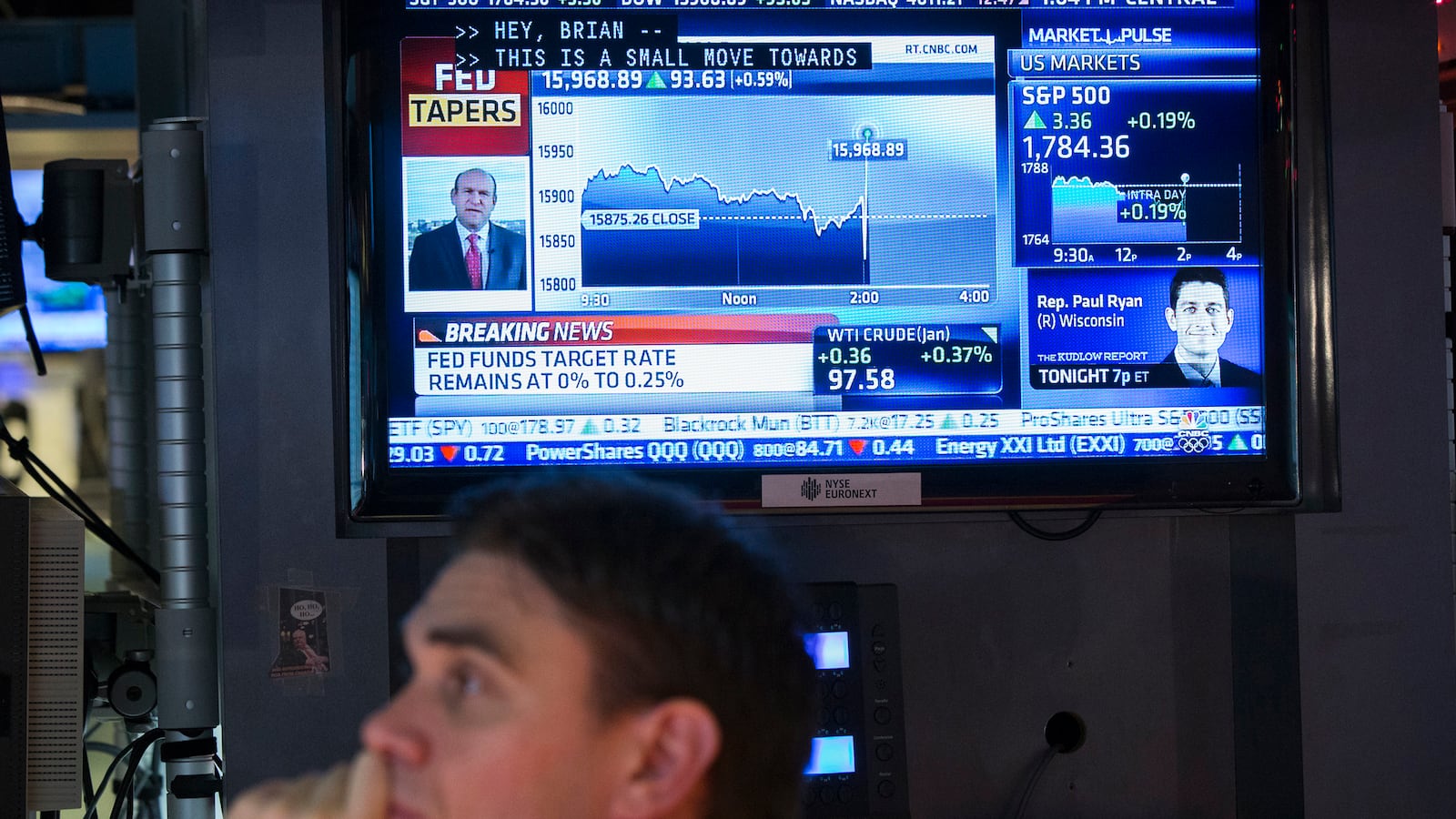It’s been a bad week or so for the economic catastrophists.
Never mind that the S&P 500 is near a record high, that the economy has been expanding for 53 months, and that payrolls have risen by nearly 7.5 million since February 2010.
Many still continue to believe that disaster is right around the corner. Why? The narrative goes something like this. There’s Obamacare, which is supposed to inhibit hiring, consumption, and the general enjoyment of life. Then there’s the Federal Reserve, supposedly required by the economy’s perennial weakness to buy $85 billion of bonds a month forever, never exiting from its quantitative easing policy—which would set up a disastrous inflation. And should the Fed exit, interest rates will soar, and the stock and housing markets will crash. Consumers, hamstrung by low confidence and a weak recovery, are reluctant to spend and borrow. That inhibits consumption, which accounts for 70 percent of economic activity. Growth, which has been stuck at about 2 percent, will never accelerate. Meanwhile, Washington is incapable of doing anything except inflicting damage on the economy.
But the surprise data flow and events of the past week have gone against this narrative.
To wit. On December 12, the Census Bureau reported that retail sales rose a healthy .7 percent in November from October, and were up 4.7 percent from November 2012. So far this year, retail sales are up 4.3 percent from 2012. More people are working at slightly higher wages, and so they’ve got more fuel for consumption. Meanwhile, something else seems to have changed. Since the financial crisis, American consumers have been hacking down at their mountain of debt—through foreclosure and default, yes, but also through paying down credit cards, home equity lines, and credit cards, and by stopping themselves from taking on new debt. Generally, the amount of revolving debt (i.e. credit cards) is back to the level it was at in 2006. But this is changing. Earlier this month, the Fed reported that in October, revolving credit rose at a 7.5 percent annual rate. Americans are gingerly releveraging. (Matthew Boesler at Business Insider dubbed a chart showing this increase “the most important chart of 2013.”) That’s good news for consumption, so long as people can maintain their debts. And guess what? Debt service as a percentage of disposable income is at an extremely low level.
As for Washington, last week Congress struck a deal essentially to fund the government for two years—at higher levels of spending. The Ryan-Murray compromise, which undoes much of the sequester immediately in exchange for higher revenues over the next ten years, has a two-fold benefit. First, it means that America won’t suffer a debilitating, confidence-destroying shutdown in the near future. Second, by undoing cuts and actually boosting spending—even by only a few percentage points—government spending and investment will again become a consistent contributor to overall growth. Yes, the debt ceiling looms again early next year. But I think we all know how that is going to play out (Republicans stomping their feet, yelling, threatening, and ultimately caving.)
On Wednesday, Ben Bernanke, in his final press conference, dropped a surprise. In January, the Fed will start to scale back—taper—its bond purchases, from $85 billion per month to $75 billion. That’s a small amount, but it’s a significant first step, that, if repeated, would bring that program to a close next year. In response to the news that the Fed would be removing a crucial source of support, the markets...went nuts. Stocks soared as investors took heart from the underlying strength of the economy. Long-term bond prices floated upward, but still remain below three percent. The price of gold, a barometer of economic fear, plummeted.
Why did the Fed act? Essentially, Bernanke concluded that the underlying forces propelling the economy forward are stronger than people think. And Friday morning, we got confirmation of this hunch. The Commerce Department, in reporting its second revision of third quarter growth, revised the growth rate up from 3.6 percent to 4.1 percent. (For comparison’s sake, the first estimate of third quarter growth, released just six weeks ago, pegged the rate at a non-impressive 2.8 percent. Overall, the report presented a picture of an economy in which both consumer and business activity is rising smartly. Even government chipped in a little, adding eight basis points to the growth rate. This is the first time the quarterly growth rate has risen above four percent since the fourth quarter of 2011. The pace of fourth quarter growth is nowhere near as torrid – about 2.3 percent according to Macroeconomic Advisers.
Of course, plenty can still go wrong. But the U.S. economy has dealt pretty decisively with the series of headwinds in the past year: the fiscal cliff, rising taxes and the sequester, the shutdown and threat of default, the advent of Obamacre, a year of turmoil and scares about growth abroad, and a transition at the Federal Reserve. Virtually none of the disastrous results foretold by declinists and catastrophists materialized in 2013. Better luck next year!






